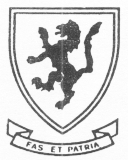| Purley Boys' High School | |
|---|---|
 | |
| Location | |
 | |
Placehouse Lane , , CR5 1YA England | |
| Coordinates | 51°18′20″N0°07′15″W / 51.30565°N 0.12072°W |
| Information | |
| Motto | Fas et Patria |
| Established | 1914 |
| Closed | 1988 |
| Local authority | London Borough of Croydon |
| Department for Education URN | 126815 Tables |
| Ofsted | Reports |
| Gender | Boys |
| Age | 14to 18 |
Purley High School for Boys existed from 1914 to 1988. Originally located in Purley from 1914, in 1936 it relocated to Placehouse Lane, Old Coulsdon, London Borough of Croydon. The school was Purley County Grammar School from 1914 to 1969, becoming Purley Grammar School for Boys and then, in 1973, Purley High School for Boys after the abolition of the Grammar School system and the implementation of the Comprehensive System.
Contents
As Purley High School for Boys it was a senior secondary school, for students aged 14 to 18.
Purley High School had a reputation for strictness and for the frequent use of corporal punishment; In 1977-78 records showed 394 canings in a school of 900 boys. [1] Its record on canings came to the attention of STOPP during the 1970s and 1980s. This was because STOPP happened to be based in Croydon at the time, and managed to get the Local Education Authority to publish an analysis of statistics collated from school punishment books, the first time this had happened in the UK. This resulted in Purley High School for Boys being mentioned in numerous articles in the national press regarding what was criticised as its excessive corporal punishment record. [2] However, statistics for the use of corporal punishment later appeared from other areas of England and Wales, suggesting that Purley's caning record, compared with some other boys' secondary schools, was not quite as extraordinary as STOPP had originally claimed, once the fact that Purley was a 14–18 school (and therefore had about twice the proportion of 14- to 16-year-olds as an 11–18 school) was taken into account, 14–16 being almost invariably the peak age group for getting into trouble at school. [3] [ better source needed ]
The school motto was Fas et Patria, meaning Faith and Country. The Headmaster from 1968 to 1988 was Mr Derek Akers (Oxon).
After 52 years at the Placehouse Lane location, the school was closed in 1988, being replaced by Purley Sixth Form College, which was renamed Coulsdon College and then Coulsdon Sixth Form College.
The 1930s Placehouse Lane school buildings were completely demolished during 2010–2011 and have been replaced by new college facilities.